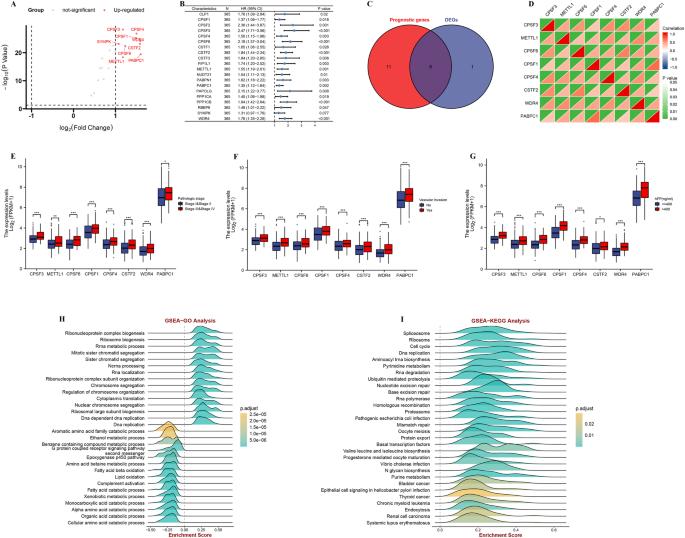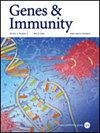RNA 加工修饰介导的亚型说明了肝细胞癌肿瘤微环境的独特特征。
IF 4.5
3区 医学
Q1 GENETICS & HEREDITY
引用次数: 0
摘要
通过对 RNA 的 5' 端和 3' 端进行加工和修饰,可以形成基因的多种转录本异构体。本研究旨在揭示肝细胞癌(HCC)中 RNA 加工修饰(RPM)的特征,并确定新的生物标志物和潜在的治疗靶点。首先,我们进行了综合生物信息学分析,以确定风险预后RPM调节因子(RPMRs)。然后,我们利用这些RPMRs确定了HCC的亚型,并探索了亚型之间免疫微环境和细胞功能改善途径的差异。最后,我们使用主成分分析算法估算了RPM评分,并将其应用于5个队列。患者的RPM评分越低,生存率越低,免疫浸润越强,免疫检查点的表达越高,这与 "免疫潮汐模型理论 "相一致。RPM评分表现出稳健性,这在多个数据集中得到了验证。从机制上讲,低RPMscore可通过操纵肿瘤相关巨噬细胞在HCC中创造免疫抑制微环境。在临床前,高RPM评分的患者可能会从免疫疗法中获益。RPM评分有助于对预后不同的HCC患者进行分组和免疫治疗。我们的RPM评分模型可以帮助临床医生为HCC患者选择个性化疗法,RPM评分可能在HCC的发展过程中起到一定的作用。本文章由计算机程序翻译,如有差异,请以英文原文为准。

RNA processing modification mediated subtypes illustrate the distinctive features of tumor microenvironment in hepatocellular carcinoma
Multiple transcript isoforms of genes can be formed by processing and modifying the 5′ and 3′ ends of RNA. Herein, the aim of this study is to uncover the characteristics of RNA processing modification (RPM) in hepatocellular carcinoma (HCC), and to identify novel biomarkers and potential targets for treatment. Firstly, integrated bioinformatics analysis was carried out to identify risk prognostic RPM regulators (RPMRs). Then, we used these RPMRs to identify subtypes of HCC and explore differences in immune microenvironment and cellular function improvement pathways between the sub-types. Finally, we used the principal component analysis algorithms to estimate RPMscore, which were applied to 5 cohorts. Lower RPMscore among patients correlated with a declined survival rate, increased immune infiltration, and raised expression of immune checkpoints, aligning with the “immunity tidal model theory”. The RPMscore exhibited robust, which was validated in multiple datasets. Mechanistically, low RPMscore can create an immunosuppressive microenvironment in HCC by manipulating tumor-associated macrophages. Preclinically, patients with high RPMscore might benefit from immunotherapy. The RPMscore is helpful in clustering HCC patients with distinct prognosis and immunotherapy. Our RPMscore model can help clinicians to select personalized therapy for HCC patients, and RPMscore may act a part in the development of HCC.
求助全文
通过发布文献求助,成功后即可免费获取论文全文。
去求助
来源期刊

Genes and immunity
医学-免疫学
CiteScore
8.90
自引率
4.00%
发文量
28
审稿时长
6-12 weeks
期刊介绍:
Genes & Immunity emphasizes studies investigating how genetic, genomic and functional variations affect immune cells and the immune system, and associated processes in the regulation of health and disease. It further highlights articles on the transcriptional and posttranslational control of gene products involved in signaling pathways regulating immune cells, and protective and destructive immune responses.
 求助内容:
求助内容: 应助结果提醒方式:
应助结果提醒方式:


